
Students apply their understanding of transformations of functions and their graphs to piecewise functions.
- Subject:
- Mathematics
- Material Type:
- Lesson Plan
- Provider:
- EngageNY
- Date Added:
- 02/02/2018

Students apply their understanding of transformations of functions and their graphs to piecewise functions.

Students study the effect a horizontal scaling by scale factor k has on the graph of an equation y = f(x).

Lesson plan on transformation of functions and effects on domain and range. Also shows image and pre image differences and similarities.
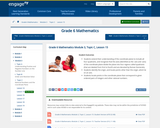
In this lesson, students extend their understanding of the coordinate plane to include all four quadrants, and recognize that the axes (identified as the -axis and -axis) of the coordinate plane divide the plane into four regions called quadrants (that are labeled from first to fourth and are denoted by Roman Numerals). Students identify the origin, and locate points other than the origin, which lie on an axis. Students locate points in the coordinate plane that correspond to given ordered pairs of integers and other rational numbers.
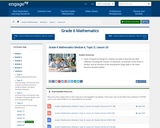
In this lesson, students are given a frequency histogram to describe the data collected, including the number of responses, an estimate of the mean or median, and an estimate of the interquartile range (IQR) or the mean absolute deviation (MAD).

In this lesson, students construct a frequency histogram and recognize that the number of intervals may affect the shape of a histogram.
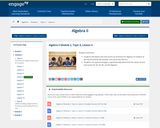
Lesson using special triangles and 30-45-90 angle relationships with trig functions.
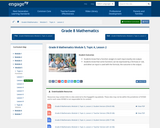
In this lesson, students know that a function assigns to each input exactly one output. Students know that some functions can be expressed by a formula or rule, and when an input is used with the formula, the outcome is the output.

In this lesson, students experimentally verify the properties related to the Fundamental Theorem of Similarity (FTS).
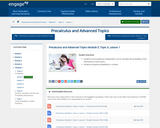
Students use the general multiplication rule to calculate the probability of the intersection of two events. Students interpret probabilities in context.
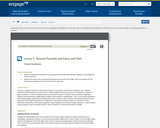
Students examine the relationship between a cross-section and the base of a general cone. Students understand that pyramids and circular cones are subsets of general cones just as prisms and cylinders are subsets of general cylinders.

Students are reintroduced to several solids as a lead into establishing the volume formulas for the figures. They also identify the three-dimensional object generated by the rotation of a rectangular region about an axis
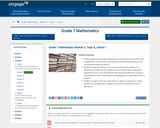
In this lesson, students generate equivalent expressions using the fact that addition and multiplication can be done in any order (commutative property) and any grouping (associative property).
Students recognize how any order, any grouping can be applied in a subtraction problem by using additive inverse relationships (adding the opposite) to form a sum and likewise with division problems by using the multiplicative inverse relationships (multiplying by the reciprocal) to form a product.
Students recognize that any order does not apply to expressions mixing addition and multiplication, leading to the need to follow the order of operations.
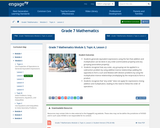
In this lesson, students generate equivalent expressions using the fact that addition and multiplication can be done in any order (commutative property) and any grouping (associative property).
Students recognize how any order, any grouping can be applied in a subtraction problem by using additive inverse relationships (adding the opposite) to form a sum and likewise with division problems by using the multiplicative inverse relationships (multiplying by the reciprocal) to form a product.
Students recognize that “any order” does not apply for expressions mixing addition and multiplication, leading to the need to follow the order of operations.

Students find the perimeter of a triangle or quadrilateral in the coordinate plane given a description by inequalities.
Students find the area of a triangle or quadrilateral in the coordinate plane given a description by inequalities by employing Green’s theorem.
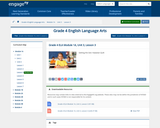
In this lesson, students integrate information from two texts on the same topic.

In this lesson students draft an analytical mini-essay using partner talk and graphic organizers to guide their thinking.
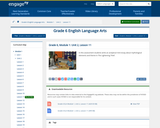
In this assessment students write an analytical mini-essay about mythological elements and theme in The Lightening Thief.
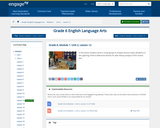
In this lesson students work in small groups to analyze various myths alluded to in the Lightning Thief to determine themes for later literary analysis of the central text.
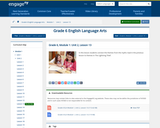
In this lesson students connect the themes from the myths read in the previous lesson to themes in The Lightning Thief.